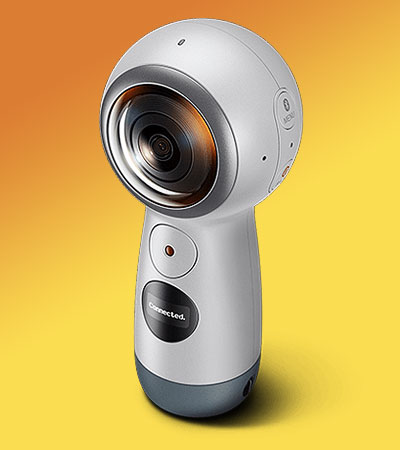
click here to dowload samsung s8 guru
these look like strong steps forward for Samsung -- and if Bixby works as promised, the S8 and S8+ could prove to be game changers, especially on an accessibility level.
Rating: 4 out of 5 Tiny Sticks of Dynamite
Coming at You Live in 360 Degrees
We've a heavy Samsung focus this time around, so here's a look at a new version of its 360-degree live-streaming camera.
The Gear 360 has a slick design and can broadcast footage in 2K resolution (it can record in 4K), but perhaps its biggest selling point is that it can function with iPhones. That could prove to be a huge draw for people who want to stream everything around them but don't want to jump to Android.
The Gear 360 has a slick design and can broadcast footage in 2K resolution (it can record in 4K), but perhaps its biggest selling point is that it can function with iPhones. That could prove to be a huge draw for people who want to stream everything around them but don't want to jump to Android.





 Are you a vr game or app creator
Are you a vr game or app creator 

/cdn0.vox-cdn.com/uploads/chorus_asset/file/8245279/akrales_170327_1549_A_0140.0.jpg)
/cdn0.vox-cdn.com/uploads/chorus_asset/file/8245447/vpavic_220317_1557_0214.0.jpg)